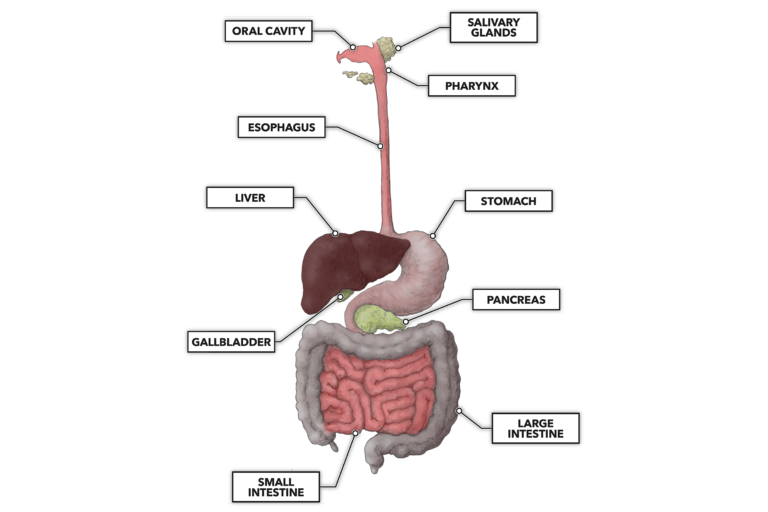Most fitness plans involve a consideration and modification of what we eat. We eat to support the anatomical and physiological adaptations that result from consistent and progressive exercise. As such, we need to consider the anatomy of the gastrointestinal system, because structure dictates function as well as adaptation in function.

Figure 1: The gastrointestinal system includes the alimentary canal, a tube that passes through the body from the mouth to the anus, and all the associated organs and structures.
The digestive system is not a simple structure; it is a complex aggregation comprising several organs, tissues, structures, glands, and regions:
Alimentary canal:
-
- Oral cavity
- Pharynx
- Esophagus
- Stomach
- Small intestine
- Large intestine
Glands/Glandular organs:
-
- Salivary glands
- Liver
- Gallbladder
- Pancreas
From beginning to end, the gastrointestinal tract is about 20 feet or so long (about 6 meters). This varies by body size, with larger individuals having longer tracts. It is frequently touted that the tract is about 30 feet long (about 9 meters), but this measure is from autopsy specimens that no longer have muscle tonus. In a living human, the gut is active and the episodic contractions of its resident smooth muscle variable contract its length (and circumference) during both digestive processes and periods of quiescence.
That brings us to the basic function of the gastrointestinal system: It provides for the mechanical and biochemical processing of the food we eat and beverages we drink. The various features of the system have specialized structures and functions that contribute to those biological objectives. Understanding the anatomy and physiology of the gastrointestinal system allows us to know how eating supports exercise adaptation. It also provides us with an essential critical skill: the ability to determine which dietary approaches may actually work and which are baseless marketing claims that ignore how the body actually functions.
Learn more about human anatomy in CrossFit’s online Anatomy Course.
Comments on The Gastrointestinal System: An Introduction
Love this resource for my Health classes!
Thanks HQ
Where do you teach Health?
The Gastrointestinal System: An Introduction
2